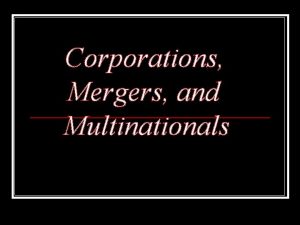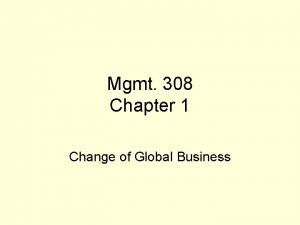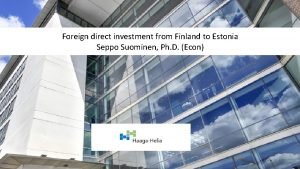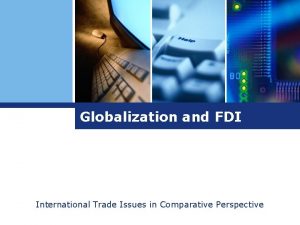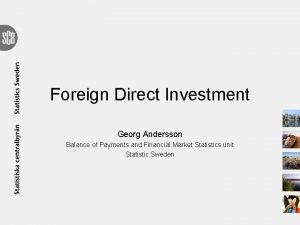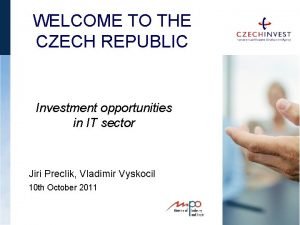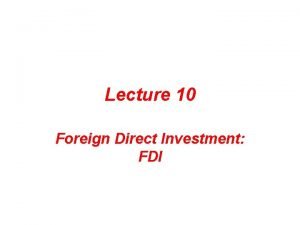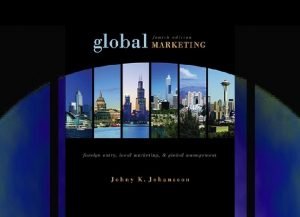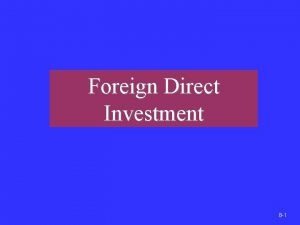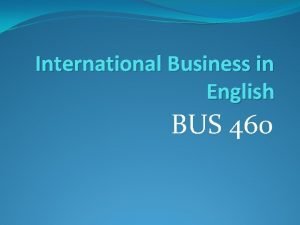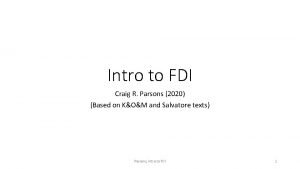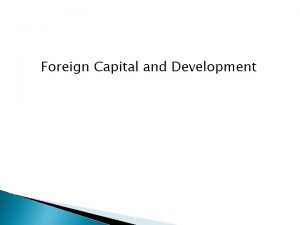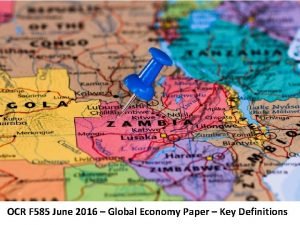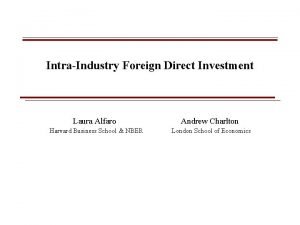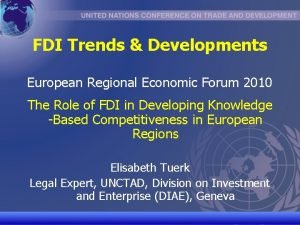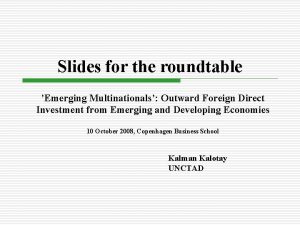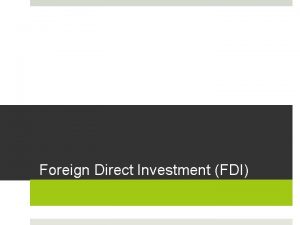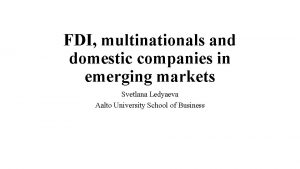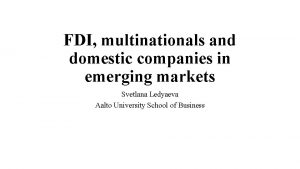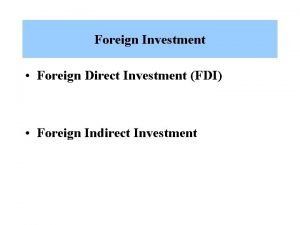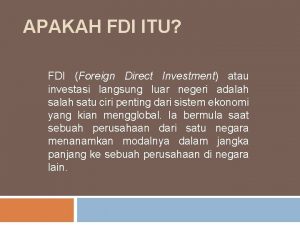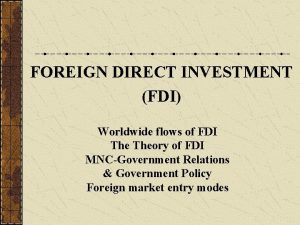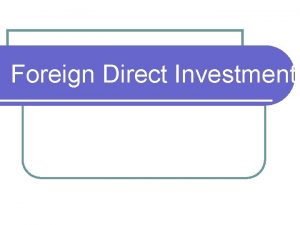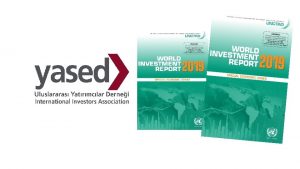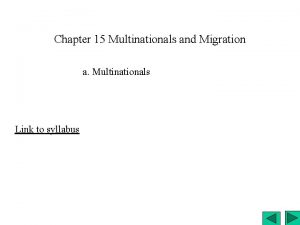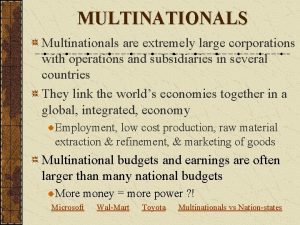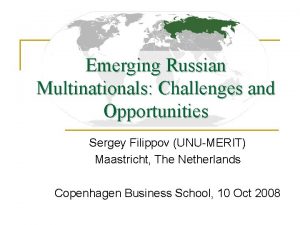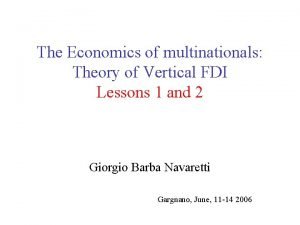Modelling Russian outward FDI Emerging Multinationals Outward Foreign

















- Slides: 17

Modelling Russian outward FDI ’Emerging Multinationals’: Outward Foreign Direct Investment from Emerging and Developing Economies 10 October 2008, Copenhagen Business School Kalman Kalotay UNCTAD Astrit Sulstarova UNCTAD

CONTENTS I. Dynamics of outward FDI from Russia II. How FDI theorems explain Russian outward FDI III. Hypotheses IV. Econometric results V. Conclusions

Dynamics of Russian outward investment q q Early 1990 s: Russia was a major informal capital exporter Since 1999: quick rise of registered outward FDI stock, surpassing other BRICS (next slide) OFDI from Russia is partly driven by cross-border mergers and acquisitions (M&As) Largest Russian transnational corporations (TNCs) have strong oligopolistic /monopolistic advantages

Dynamics of outward FDI stock from Russia

Features of cross-border M&A purchases by Russian TNCs q Russian TNCs have targeted mostly developedcountry firms (next slide) q The UK has been the largest target, followed by Canada q The share of CIS limited; highest (28%) in 20012004 Sectoral distribution (subsequent slide): q The bulk (60%) of acquisitions in the primary sector q Manufacturing was the main target sector in the early 1990 s but fell behind

Cross-border M&A purchases by Russian TNCs (by host country/region)

Cross-border M&A purchases by Russian TNCs (by host sector/industry)

The universe of Russian TNCs q Capital exports are driven by large industrial conglomerates concentrated in q natural-resource-based industries (Gazprom, Lukoil) q metal processing (Severstal, UC Rusal, Norilsk Nickel and Evraz) q telecommunications (Sistema, Mobile Tele. Systems and Vimpel. Com)

The 20 largest Russian TNCs

How the OLI paradigm can explain Russian outward FDI Paper focuses on OLI. Main hypotheses: q The internalization (I) aspect of TNCs strategies can explain the behaviour of Russian firms. q Ownership (O) advantages are less straightforward although q Oa advantages consisting of property rights and intangible assets and advantages of common governance q Ot advantages consisting of organization and management q Home country advantages (H) play a key role in determining outward FDI

Formal hypotheses for modelling

Econometric results 1 (determinants of outward FDI worldwide) q GDP per capita is a key determinant of outward FDI (1% rise in GDP per capita will cause a 0. 65% increase of outward FDI stock) q Exports (entry of national firms through arm’s length transactions) is important determinants of outward FDI (a 1% growth in exports will result in a 0. 96% increase in the FDI outward stock)

Econometric results 2 (determinants of outward FDI from Russia) q GDP per capita has more impact on outward FDI than exports (1% rise in GDP per capita will increase outward FDI stock by 0. 95%, compared to only 0. 17% in the case of exports) q. Policy change (1999) is also significant

Econometric results 3 (locational determinants of outward FDI) q Most of the econometric results confirmed our preliminary hypotheses q Home country market size (measured by GDP per capita) is the variable with the highest significant coefficient q Three main host-country variables (absolute size of the economy, natural resources endowments and services) are significant with the expected sign q In contrast, asset-seeking motives, distance and exchange rate were not significant

Econometric results 3 (table)

Conclusions q Among the first attempts to model formally Russian outward FDI q In terms of main variables explaining Russian OFDI, q home-country market size has been found as a particularly important factor q market size of the host countries and equally q host-country natural resources have been found to be important drivers of Russian OFDI

Thank you Kalman Kalotay UNCTAD kalman. kalotay@unctad. org Astrit Sulstarova UNCTAD astrit. sulstarova@unctad. org
 Corporations mergers and multinationals
Corporations mergers and multinationals What are mini multinationals
What are mini multinationals Too foreign for here too foreign for home
Too foreign for here too foreign for home Greenfield investment
Greenfield investment Fdi
Fdi Fdi meaning
Fdi meaning Fdi
Fdi Pros and cons of greenfield investment
Pros and cons of greenfield investment Non-equity strategic alliance pros and cons
Non-equity strategic alliance pros and cons Fdi meaning
Fdi meaning Fdi in international business
Fdi in international business Vertical fdi examples
Vertical fdi examples Tooth 10 and 11
Tooth 10 and 11 Types of foreign aid
Types of foreign aid Fdi tutor2u
Fdi tutor2u Tratado kellog alfaro
Tratado kellog alfaro Role of fdi
Role of fdi Advantage and disadvantages of fdi
Advantage and disadvantages of fdi
